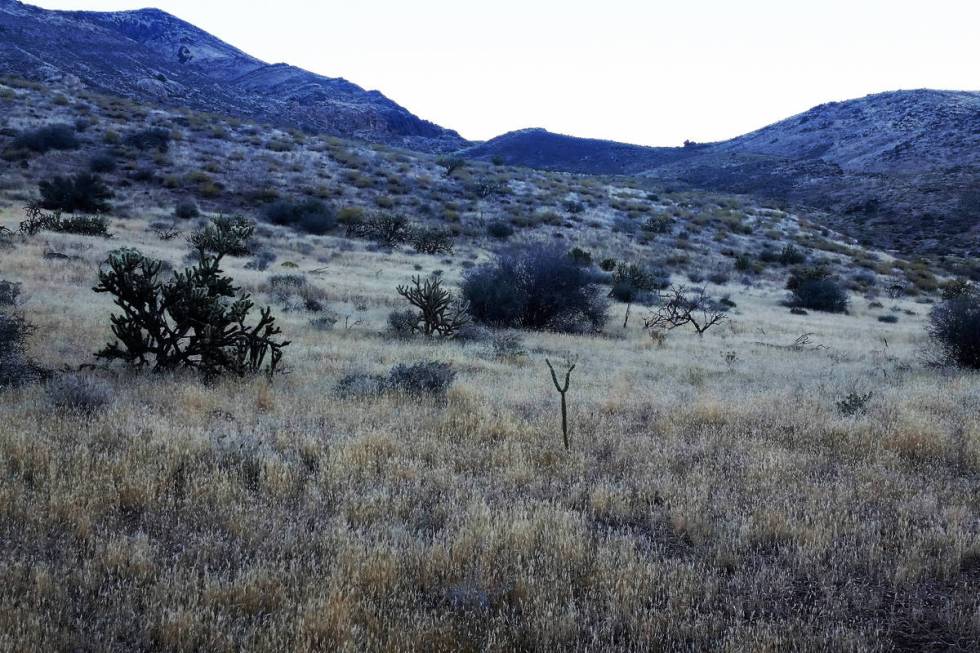Chukar and quail test hunters stamina and shooting ability

When the sun comes up Saturday morning, it will mark the beginning of Nevada’s chukar and quail hunting seasons statewide. It also is opening day for waterfowl seasons in the state’s Northwest Zone, which means there is plenty of opportunity for a weekend outing.
When it comes to upland game birds, the chukar partridge has long been the bird of choice for Nevada’s wing shooters, but Gambel’s quail are not far behind. Both of these quick running birds are elusive and will test your physical stamina as well as your shooting ability, but chukars also have a mean streak.
Chukars prefer country that is steep and deep with unimpeded views of their surroundings. You often will see them perched high on a slope where they can monitor their neighborhood. Look for these wary birds on steep, rocky slopes covered with a mixture of grasses and separated by deep canyons. Generally, they are found at elevations ranging from about 4,000 feet to 13,000 feet, though here in Southern Nevada they can often be found at lower elevations.
When pushed, chukars prefer to run, but not generally in a direction that makes it easy on the hunter. Instead they turn uphill and scamper up the steep, rocky slopes they call home. Not at a frantic pace, but just fast enough to keep your attention while staying ahead and out of shotgun range. They want your legs to feel like lead, your lungs to burn and your breath to come in ragged gasps.
Then, if you can get them to hold long enough to flush them within shooting range, they tend to fly back downhill or across the canyon to another ridge top. Either way you have a walk ahead of you. First downhill and then back up again. Always up.
Their mean streak really comes into play once they reach a rocky overlook or that distant ridge top, anyplace they can look down on the pursuing, panting hunter they just left behind. At least one of those birds will assume a defiant pose on a perch and let go with a rally call that sounds more like evil laughter than an attempt to gather covey members.
Many a demoralized hunter has experienced the disrespect of a gloating chukar.
The good news is that when chukars flush, some birds will hold and provide hunters with the chance to pick up a few singles. Having a good bird dog will help. Something else to keep in mind is that chukars running uphill will often seek cover when they reach the top of a ridge. So, if you are following a covey up a hill, be ready when you near the crest. I have often found them hiding in brush or grass just over the top.
Quail are smaller than chukar and a whole lot nicer. Though their habitat will overlap with that of chukars, quail tend to prefer lower elevations with more forgiving terrain. They will use steep hills to their advantage, but they are not their first choice. Quail tend to live at elevations below 6,000 feet in desert scrub habitats where they spend their time in brush-filled draws and on low slopes. For travel corridors they tend to prefer the bottom of washes.
Like chukars, Gambel’s quail prefer to run when first disturbed. Despite their size, they can cover country when they want to and will easily outrun most hunters and even dogs. Put enough pressure on the covey to flush the birds. Then watch where the birds land. It probably will not be too far away the first time. Get there as quickly as you can do so safely. Then flush the covey again. This time some of the birds will hold and you can pick up a few singles before pursuing the covey.
As the season gets underway, keep in mind that drought conditions have persisted in Southern Nevada for nearly two decades. As of this writing, 170 days have passed without any measurable precipitation. That means coveys are going to be small along with overall bird populations. It also means water is going to be critical and should be a consideration in your planning. However, since it has been so dry, guzzlers that many hunters depend on are going to be low on water or even dry because they are designed to trap and store rainwater.
The key to success will be a willingness to adjust your plans and burn some shoe leather.
Freelance writer Doug Nielsen is a conservation educator for the Nevada Department of Wildlife. His “In the Outdoors” column is not affiliated with or endorsed by the NDOW. Any opinions he states in his column are his own. Find him on Facebook at @dougwritesoutdoors. He can be reached at intheoutdoorslv@gmail.com
CUTLINE: Grassy hillsides with brush-filled draws and steep slopes are a good place to start looking for both quail and chukar partridge, especially if there is a water source nearby. This pocket of habitat holds both.
Freelance writer Doug Nielsen is a conservation educator for the Nevada Department of Wildlife. His “In the Outdoors” column is not affiliated with or endorsed by the NDOW. Any opinions he states in his column are his own. Find him on Facebook at @dougwritesoutdoors. He can be reached at intheoutdoorslv@gmail.com